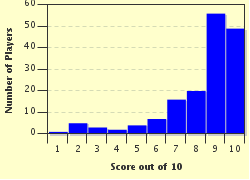Quiz Answer Key and Fun Facts
1. The Sino-Korean character in the photo is derived from an early representation of clouds with drops of water underneath. What does this character represent?
2. This Sino-Korean character represents a period of time. In other contexts, it may represent the sun. Which of the following periods of time does it generally represent?
3. The Sino-Korean character in the photo when combined with the words "yo il" represents the day Monday. Which word best describes the definition of the character? (The character evolved from a crescent shape.)
4. For this Sino-Korean character, you may imagine a bow and arrow along with its target. Which direction does this character represent?
5. The Sino-Korean character in the photo represents a number. It's greater than zero and less than ten. Which number is it? (Look closely at the photo.)
6. If you can imagine the lower portion of this Sino-Korean character to be a kite flying and the upper portion to be clouds during a thunderstorm, you should be able to determine the meaning of the character in the photo. What does the character represent?
7. The Sino-Korean character in the accompanying photo represents a geographical feature. Imagine three peaks, if you will. Which feature does this character represent?
8. The interesting Sino-Korean character in the photo represents an animal. You might be able to envision it galloping along. Some beginning chess players refer to their knights by this name. Which animal is it?
9. The accompanying photo for this Sino-Korean character depicts a form of transportation. This character is also a piece from Korean chess called the Chariot. Which more modern vehicle does this character symbolize?
10. For the final question, two Sino-Korean characters are combined to represent a single concept. Fill in the blank from the following quotation to find the meaning of the character compound: "England and America are two countries separated by the same __________". (One of the characters means "speech")
.
Source: Author
christopherm
This quiz was reviewed by FunTrivia editor
stedman before going online.
Any errors found in FunTrivia content are routinely corrected through our feedback system.

